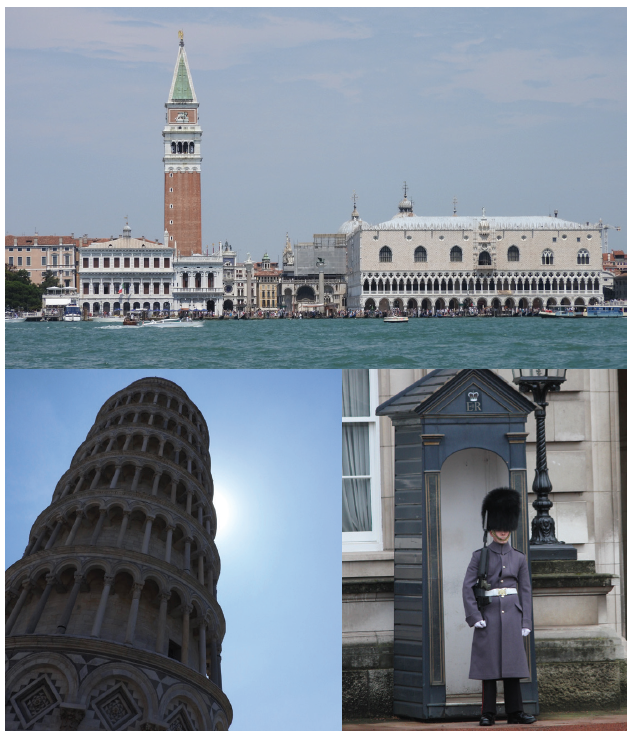
Venturing Abroad as a Gluten-Free Traveler – Tips & Advice on What to Expect
As I sit here on our return flight after a two-week family trip to Italy, I marvel at how we did it. Not how we traveled with two teenagers, but how we managed to do it without any major gluten-free dining snags!
As any of you who have traveled abroad know, this is no small feat. It’s a landscape that’s still filled with potential hazards. In fact, some of you may remain skittish about traveling anywhere – let alone out of the country. I don’t blame you for being cautious. After all, no one wants to get “glutened” on a trip.
But what I can say is that I’m so thankful for how far the gluten-free community has come (not just domestically, but internationally) in terms of awareness. Traveling abroad even five years ago wasn’t nearly as easy as it is now.
Thanks to celiac associations around the world, restaurateurs are higher on the learning curve when it comes to offering safe gluten-free options for their diners. In some countries, like Italy, we found awareness to be even better than in the U.S. Not surprisingly, the Italians have risen to the occasion and developed versions of gluten-free pasta and pizza that you’d never know are gluten-free.
No matter where you choose to travel, however, there will be a good amount of research and planning required. Traveling as a celiac is not a fly-by-the-seat-of-your-pants sort of trip!
I typically spend numerous hours planning our trips abroad, and that’s even when I have the help of a good travel agent who specializes in gluten-free clients. I always start on my own website, glutenfreetravelsite.com, to read restaurant reviews. I also do internet searches to read about the gluten-free scene from local bloggers. Local celiac support groups, some of which compile lists of (or even certify) local restaurants, can also be a huge help.
If venturing out of the U.S. for the first time, stick with countries that have the best reputations for gluten-free knowledge (Italy, England, Ireland, Canada, Australia, and New Zealand). Even in the most “gluten-free friendly” cities, I always feel most comfortable dining in restaurants that either have a gluten-free menu or make reference to gluten-free options on their websites. Without either of these implicit “assurances,” you’re left wondering how much you need to educate the staff to keep you safe.
If you want to visit a country that’s less gluten-free savvy, consult with a gluten-free travel specialist who can help with the details by using contacts he or she has established in that country. (You’ll find several listed in the Trip Planning area of the Gluten Free Resources section of my website, as well as on my Gluten Free Getaways page.)
A good agent can help you find safe and convenient accommodations, too. Staying in an apartment can be the best option when traveling abroad where it’s often hard to find hotel rooms for more than two people. If you’re a family of four or more, you can typically find a nice, spacious apartment for less than the cost of two hotel rooms. This gives you a kitchen for preparing hearty gluten-free breakfasts before a full day of sightseeing and even dinners on nights that you prefer not to dine out.
Once you’ve decided where to stay, places to see, and the restaurants that look best, I recommend creating your own map in My Google Maps. Just enter the name of a site or restaurant into the search box at the top of the page and then click “Add to Map” to plot a marker. I found this method to be effective for planning in advance where to eat near each site and finding our way around during our trip.
You can also use a large foldout map of the city. We’ve found these “old school” maps to be a good backup to using smartphone navigation apps. Plus, you won’t be dependent on Wi-Fi or cellular coverage. Even when we had good coverage, we sometimes found mapping apps unreliable in certain cities.
Here are some other invaluable tips for a successful trip:
• Pack your favorite gluten-free snacks in your luggage, and then always bring some with you in your purse or backpack when sightseeing. These are essential for hunger pangs between meals, as an alternative to a big lunch, or when a planned gluten-free meal at a restaurant goes awry. They also prevent you from having to constantly seek out snacks, read labels, and spend too much money. Plus, as you eat your supply of snacks, you’ll free up space in your suitcase or carry-on for small purchases!
• Look for places with naturally gluten-free alternatives for snacks, like fruit stands, smoothie shops, or markets selling gourmet cheeses. If in Italy, gelato makes a great midafternoon snack, especially in the summer. Just be sure to inquire about which flavors are “senza glutine.”
• Make reservations for dinner – at least for a few nights of your trip. Personally, I choose what appears to be the most “gluten-free friendly” restaurant in each city and make a reservation for the first night. If we fall in love with the restaurant, we can go back another night.
• Buy or make a gluten-free dining card explaining the gluten-free diet and how to avoid cross contamination in the language of the country where you’ll be traveling. If you’re traveling where gluten-free awareness isn’t particularly high or if you don’t know the native language, these are essential.
• Dine out at off-peak times, if possible. The staff will be better equipped to handle your questions and requests, as well as the safe preparation of your food.
• Tipping 15 to 20 percent is not customary in many countries. Research what’s acceptable in the destination you’re visiting. You don’t want to shortchange your servers or guides, but you don’t want to throw away money unnecessarily, either.
• Exchange some money for local currency before you go. You can do this at most banks with a day’s notice. If you’re a member of AAA, it also offers great exchange rates and will send you the money in the mail within days.
• Call your credit card company to find out if it charges a foreign transaction fee (it’s often 3 percent). Again, AAA is a good resource for a credit card without a transaction fee. American Express doesn’t charge one, either, but its cards aren’t as widely accepted.
• Book sightseeing tours in advance. This beats scrambling at the last minute when the best tours may be booked. This is another area where a good travel agent can help – connecting you with the best companies for “skip the line” tours and an inside glimpse of areas not always accessible by the general public.
• Be sure you have the correct adapters and chargers for all your electronic devices. There’s nothing worse than having your laptop, tablet, phone, or camera die, only to find you can’t charge it without making a trip to the local electronics store. Take your ear buds when you go on tours. You may prefer them to the ones the tour company passes out.
• Opt for public transportation to save money on cabs, which can also be hard to find in certain cities. (Uber and Lyft aren’t available in all countries, either.) We’ve found that using the subway in cities like Paris, London, and Rome was easy, safe, inexpensive, and a great way to teach our kids how to navigate a foreign city.
• Bring several pairs of comfortable walking shoes, cushioned socks, and bandages for blisters. After all, the best way around is often walking. You’ll get to know the city and work off some of those extra calories you’ve consumed eating new and exciting gluten-free foods!
 ABOUT THE AUTHOR:
ABOUT THE AUTHOR:
Karen Broussard publishes glutenfreetravelsite.com and the free DINE GLUTEN FREE mobile app. Both contain thousands of GF dining and travel reviews from around the world. Karen is also the publisher of the Gluten Free Travel Blog and two e-books available on Amazon: Gluten-Free in London and Gluten-Free in Italy.




